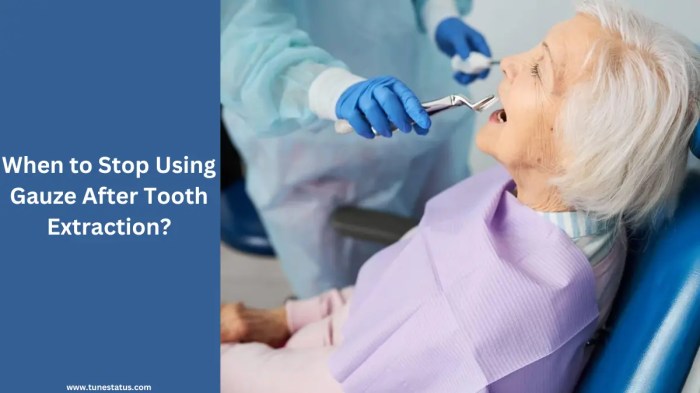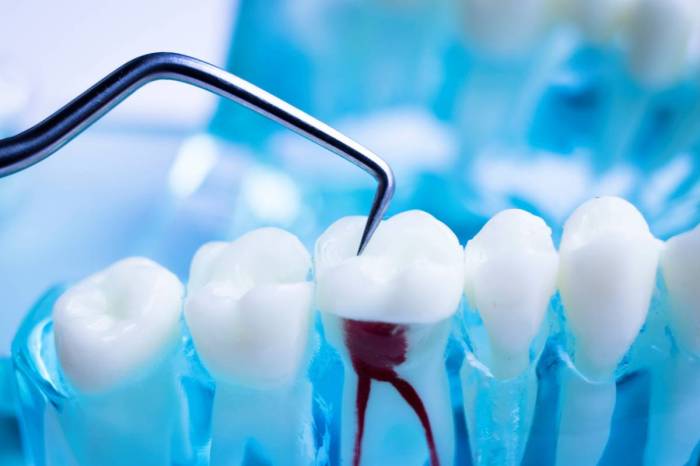How long does it take to pull a tooth? Well, brace yourself, because the answer isn’t as straightforward as a simple “one-two-three.” It depends on a multitude of factors, from the type of tooth to the patient’s overall health. Think of it as a dental rollercoaster – sometimes it’s a quick, painless zip, other times it’s a bumpy, prolonged ride to a pain-free smile.
Buckle up!
The process itself involves several steps. First, the dentist assesses the tooth’s position and type of extraction (simple or surgical). Simple extractions, like pulling a loose molar, might take 5-15 minutes. But a wisdom tooth, stubborn and nestled deep in your jaw, could demand a 15-45 minute surgical procedure. Various tools and instruments are employed, each with its own unique role in the intricate dance of dental removal.
Patient health plays a crucial role too; pre-existing conditions might influence the extraction time. After the procedure, a proper recovery period is necessary to ensure healing and prevent complications. Think of it as a delicate dance between swift action and careful consideration.
Understanding the Procedure
Tooth extraction, a common dental procedure, involves the removal of a tooth from its socket in the jawbone. This removal is necessary for various reasons, including severe decay, trauma, overcrowding, or impacted teeth. The process, though seemingly straightforward, necessitates careful planning and execution to minimize discomfort and potential complications.
Step-by-Step Description of the Extraction Process
The tooth extraction process typically follows a series of steps, tailored to the specific situation and type of extraction. For simple extractions, the process generally involves local anesthesia to numb the area, followed by the use of dental instruments to loosen and remove the tooth. For surgical extractions, the procedure might include incisions in the gum tissue, bone removal, and the use of specialized instruments to access and extract the tooth.
- Anesthesia Administration: Local anesthetic injections are administered to numb the area surrounding the tooth, minimizing discomfort during the procedure. The dentist carefully considers the patient’s medical history and any allergies when selecting the appropriate anesthetic.
- Tooth Looseness: Dental instruments, such as elevators and forceps, are used to carefully loosen the tooth from its socket. The dentist uses precise movements to avoid damaging adjacent teeth or structures.
- Extraction: Once the tooth is sufficiently loosened, the dentist uses forceps to extract the tooth. Careful extraction minimizes the risk of fracturing the tooth or damaging surrounding tissues.
- Socket Management: After extraction, the dentist manages the tooth socket to promote healing and prevent complications. This may involve applying pressure to control bleeding and packing the socket with gauze.
Types of Tooth Extractions
Tooth extractions are categorized into simple and surgical extractions based on the complexity of the procedure.
- Simple Extraction: This type of extraction involves the removal of a tooth that is visible and accessible without the need for incisions or bone removal. A common example is a decayed or fractured tooth that can be easily accessed.
- Surgical Extraction: This type of extraction is necessary when the tooth is impacted, fractured, or embedded within bone. This procedure often involves incisions in the gum tissue and/or bone removal to gain access to the tooth. Impacted wisdom teeth are a frequent example requiring surgical extraction.
Tools and Instruments Used
A variety of tools and instruments are used during tooth extraction procedures, each designed for a specific task.
- Elevators: These instruments are used to loosen the tooth from its socket. Different types of elevators are designed for various tooth positions and shapes.
- Forceps: These instruments are used to grasp and remove the tooth. A wide array of forceps is available, each designed for specific tooth shapes and sizes.
- Surgical Instruments: In surgical extractions, additional instruments, such as bone chisels and surgical burs, may be required to access and remove the tooth.
- Anesthesia Syringes: These devices are used to inject local anesthetic into the gum tissue to numb the area.
- Gauze and Pressure Packs: Used to control bleeding after extraction and promote socket healing.
Time Comparison of Extraction Types
The table below provides an estimation of the time required for different types of extractions, alongside potential complications and recovery times.
| Extraction Type | Estimated Time (minutes) | Possible Complications | Recovery Time |
|---|---|---|---|
| Simple Extraction | 5-15 | Bleeding, Infection | 1-3 days |
| Surgical Extraction | 15-45 | Dry socket, Nerve damage | 3-7 days |
Factors Affecting Extraction Time

The duration of a tooth extraction procedure is not a fixed timeframe but varies significantly based on numerous factors. Understanding these influencing factors is crucial for both the dentist and the patient to anticipate the expected procedure time and prepare accordingly. Accurate estimations allow for better scheduling and resource allocation in dental practices.Accurate estimation of extraction time allows for better scheduling and resource allocation in dental practices.
The complexity of the extraction process directly impacts the time required, with simpler extractions generally taking less time compared to more intricate procedures. Predicting extraction time also aids patients in planning their post-operative recovery and potential disruptions to their daily routines.
Tooth Position and Impaction
The location of the tooth within the jaw plays a critical role in determining extraction time. Teeth positioned in areas that are difficult to access, such as impacted wisdom teeth or teeth positioned deeply within the jawbone, require more time for careful and precise extraction. The extraction of impacted teeth often involves surgical procedures, requiring more time to carefully manipulate the surrounding bone and tissue.For example, extracting a fully erupted, healthy front tooth might take 10-15 minutes.
In contrast, the removal of an impacted wisdom tooth, often requiring bone reshaping and surgical incision, could take 30-60 minutes or more. The degree of impaction and the extent of bone surrounding the tooth significantly influence the extraction time.
Patient Health Conditions
Pre-existing medical conditions can influence the extraction process and duration. Conditions such as uncontrolled blood pressure, diabetes, or bleeding disorders may necessitate adjustments to the anesthetic protocol or post-operative care. The dentist must carefully assess the patient’s health history and current condition to ensure a safe and efficient extraction. For example, patients with a history of excessive bleeding might require closer monitoring during and after the procedure, leading to an extended extraction time.
Similarly, patients with certain heart conditions might need to be monitored more closely, potentially extending the overall procedure time.
Extraction Type
The complexity of the extraction procedure, whether simple or surgical, significantly impacts the duration. Simple extractions, involving the removal of a readily accessible tooth, typically take less time. Surgical extractions, often required for impacted or severely positioned teeth, necessitate careful bone and tissue manipulation and often take considerably longer. These procedures may involve incisions, bone removal, and the use of specialized instruments, all of which contribute to the extended duration.
Impact of Patient Factors on Extraction Time
| Factor | Description | Impact on Time |
|---|---|---|
| Tooth Position | Location of the tooth in the jaw, including the presence of impaction | Can increase time significantly for impacted or difficult-to-access teeth |
| Patient Condition | Existing medical conditions, such as bleeding disorders, uncontrolled blood pressure, or diabetes | May impact anesthesia protocols, post-operative care, and potentially extend the overall extraction time due to necessary precautions |
| Extraction Type | Classification of the extraction procedure as simple or surgical | Surgical extractions typically require more time due to the increased complexity of the procedure, including incisions, bone manipulation, and specialized instruments |
| Anesthesia Needs | Patient’s requirements for anesthesia and the type of anesthesia used | May slightly influence the time taken for the initial preparation and the monitoring required throughout the procedure. |
Pre- and Post-operative Considerations: How Long Does It Take To Pull A Tooth

Pre-operative and post-operative considerations are crucial for ensuring a smooth and safe tooth extraction procedure. Proper preparation before the extraction minimizes risks, while meticulous post-operative care facilitates a swift and comfortable recovery. Understanding these aspects is essential for both the patient and the dental professional to manage potential complications effectively.
Pre-operative Preparations
Pre-operative preparations are critical to the success of a tooth extraction. These preparations encompass a range of actions aimed at optimizing the patient’s health status and ensuring a controlled environment for the procedure. Communicating any existing medical conditions, including allergies, medications, or bleeding disorders, is paramount. This information allows the dentist to make informed decisions regarding anesthesia and the overall procedure.
Patients should also refrain from eating or drinking for a specified period before the procedure, typically several hours, to reduce the risk of aspiration and maintain a stable physiological state. Finally, patients are often instructed to inform the dental team of any recent illnesses or changes in their health status. This crucial communication helps to identify potential issues and tailor the procedure accordingly.
Post-operative Instructions, How long does it take to pull a tooth
Post-operative instructions are critical to managing the healing process and minimizing potential complications following a tooth extraction. These instructions aim to promote healing, control pain and swelling, and prevent infection. Adherence to these guidelines is essential for a swift and uncomplicated recovery.
Recovery Process and Aftercare
The recovery process after a tooth extraction varies based on individual factors. Generally, patients experience mild to moderate discomfort for a few days. The initial 24 hours are crucial, as they often dictate the healing trajectory. Pain and swelling are common, but these symptoms should gradually subside with the passage of time and proper aftercare. Patients should be prepared for potential tenderness, bruising, and localized swelling at the extraction site.
Potential Complications and Management
Potential complications after tooth extraction are relatively infrequent but require prompt attention. Dry socket, an inflammatory condition where the blood clot dislodges, is a possible complication. Prompt treatment, often involving irrigation and medicated dressings, is usually effective. Excessive bleeding is another potential complication, requiring pressure applications and potentially further intervention by the dentist. Infection, manifested by persistent pain, swelling, or fever, is also a possibility.
Antibiotics and further professional care are usually implemented to manage such infections. While uncommon, nerve damage is a rare but serious complication. Pain or numbness persisting for extended periods after the procedure should be reported to the dentist for immediate evaluation.
Post-operative Care Guidelines
Adherence to post-operative guidelines is essential for minimizing complications and promoting a smooth healing process. Following these guidelines helps manage pain, control bleeding, and prevent infection. Failure to adhere to these guidelines can result in complications and prolonged healing time.
- Maintain pressure on the extraction site with gauze for a prescribed time, typically 30-60 minutes, to promote hemostasis (control of bleeding). Excessive bleeding can lead to complications, such as hematomas or dry socket.
- Avoid rinsing or spitting vigorously for the first 24 hours to prevent dislodging the blood clot essential for proper healing. Dislodging the blood clot can lead to dry socket, a painful condition requiring further intervention.
- Follow the prescribed medication schedule meticulously to manage pain and prevent infection. Non-steroidal anti-inflammatory drugs (NSAIDs) or opioid analgesics, as directed by the dentist, are commonly used to manage discomfort.
- Report any unusual symptoms, such as persistent severe pain, swelling, fever, or excessive bleeding, to the dentist immediately. Prompt intervention can prevent complications and facilitate a successful recovery.
- Maintain good oral hygiene practices, but avoid vigorous brushing or flossing near the extraction site for several days, allowing the tissues to heal properly. Aggressive oral hygiene could dislodge the blood clot and potentially increase the risk of infection.
- Eat soft foods for a few days after the procedure to minimize stress on the healing tissues. Hard or crunchy foods can irritate the extraction site and impede the healing process.
- Avoid smoking or using straws for at least 24 hours after the extraction. These activities can interfere with the formation of a stable blood clot.
Managing Post-operative Pain and Swelling
Managing post-operative pain and swelling effectively is essential for a comfortable and speedy recovery. Following the dentist’s instructions, including prescribed medications, is crucial. Applying ice packs to the affected area can help reduce swelling. Elevating the head while resting can also contribute to minimizing swelling. Rest and maintaining a quiet environment can aid in recovery.
Patients should follow the dentist’s recommendations for pain management strategies, including over-the-counter pain relievers and prescription medications.
Last Word
In conclusion, the time it takes to pull a tooth isn’t a fixed number. It’s a dynamic process influenced by numerous factors. From the initial assessment to the post-operative care, each step plays a crucial role in the overall experience. While the anticipation of the extraction might feel daunting, the journey to a healthy smile is achievable with careful preparation, expert guidance, and diligent aftercare.
So, take a deep breath, trust your dentist, and remember that a beautiful smile is often the result of a little patience and a lot of professional care.
Commonly Asked Questions
How much does a tooth extraction cost?
The cost varies greatly depending on the type of extraction, your location, and the dentist’s fees. It’s best to contact your dentist’s office for a personalized estimate.
Can I eat anything after a tooth extraction?
Initially, stick to soft foods. Avoid anything that requires significant chewing or sucking for the first 24 hours. Listen to your dentist’s recommendations for the best recovery.
What if I experience severe pain after the extraction?
Contact your dentist immediately. They can assess the situation and provide appropriate pain management.
Are there any alternative options to tooth extraction?
Sometimes, other treatments like root canal therapy or fillings can be considered before resorting to extraction. A dentist can advise on the best course of action.
 Nimila
Nimila



